Ishida Europe Ltd. (UK) - By Nigel Smith from Ishida Europe.
In this article, I will first look at the main methods of dosing packs with which multihead weighing competes, and then at multihead weighing itself. I will then run through some major solid food areas, attempting to give a preliminary indication to readers as to whether this method is suited to their application.
Volumetric versus gravimetric:
Anyone automating a food packing process for the first time, or looking to upgrade an existing entry-level or ‘heritage’ installation, is forced to ask themselves ‘How am I going to get the right amount of product into each pack?’
Separating a set volume of product to add to the pack (volumetric filling) is one way. The other main approach is to use a set weight (gravimetric filling).
Volumetric fillers:
In the food industry, one of the commonest volumetric methods allows product to fall into the pack via a rotating screw (auger) system. This approach works at its best with free-flowing powders of regular particle size. Its accuracy can be seriously compromised if product bulk density varies too much, or if flow is impaired. Other methods for transferring set volumes include belts and feeders.
Hand weighing
Weighing by hand is the most basic of the gravimetric approaches. Clearly it is labour intensive and, as a batch process, slows down production. Companies using this approach cannot use the more advantageous ‘average weight’ scheme for monitoring compliance of their packs, but must use the more yield-damaging ‘minimum weight’ scheme.
Loss-in-weight feeders:
Product can be fed from a bin into a pack via a feeder. Load cells weigh the entire filling system and sense the change in weight that occurs while your product is discharging. The cells signal a feed rate controller, to ensure the fill weight is kept near target.
Belt dosing by weight:
A conveyor belt system, all or part of which is a weighing platform, can be used both to transport product into the pack and to monitor the weight being deposited.
Linear weighers:
In linear weighing, a single weigh hopper is fed by a bulk feeding and a fine feeding system, the first getting most of the product into the hopper and the second bringing the contents up to as near the target weight as possible. It is still relatively slow (no more than 20 weighments per head per minute), and often not very accurate. The method relies on the product being free-flowing and of uniform piece size.
Cut-gate weighers:
A recent development of the linear weighing approach is the cut-gate type, where both bulk and fine feeds arrive via the same computer-controlled, precision-engineered gate. The method is particularly suited to granules, particularly if these are sensitive to mechanical damage.
Multihead weighers (Combination weighers):
Multihead weighing works by separating a product stream out into individual weigh hoppers, controlled by an onboard computer. The computer decides which combination of hoppers should be simultaneously opened in order to give a total weight close to the target weight per pack.
The chief benefits of multihead weighing are speed and accuracy. Speed is important for efficiency and throughput per shift or production run. Accuracy is crucial in reducing ‘giveaway’, and so increasing yields of packed product.
Where the product being packed is suitable, no other weighing method approaches the speed and accuracy of multihead weighing.
However, multihead weighing may not be the best method for every product. Firstly, the product may have characteristics which make it difficult to move it smoothly into an array of weigh hoppers and from there into the pack. Fortunately, recent years have seen all sorts of ‘difficult’ (e.g. sticky or awkwardly shaped) products tamed by the improved contact surfaces, slope-geometries and product-movement systems of modern weighers.
Secondly, it is clear that the more valuable each piece or weighment, the faster the cost of a multihead weigher will be paid back via increased speed and accuracy. A few years back, this might have meant, for example, that multihead weighers would have been used for ‘value-added’ French fries, but ruled out for ‘cheap’ whole potatoes. Nowadays the relative costs of multihead weighers and food products have changed, and multiheads routinely weigh a wide variety of potatoes.
Looking at your application:
We will now look very briefly at many different food groups, in order to give the reader some idea as to whether multihead weighing is appropriate for their product.
Biscuits and bakery:
Multihead weighing works very well for biscuits. “Gentle slope” weighers (where acceleration of the product is not allowed to build up too rapidly and fall distances are kept to a minimum) and a range of inserts and linings mean that very fragile products, whether brittle or flaky, can be handled at considerable speeds.
Cereals and healthfoods:
Multihead weighers are being widely used both for simple products and for mixes. Where a mix contains one or more very costly ingredients, carrying out the mixing process on a multihead weigher can help keep consumers satisfied by ensuring an absolutely consistent amount of these in every pack, while keeping giveaway to a minimum. Multihead weighers lend themselves well to being enclosed in dust-controlling enclosures, which deals effectively with one of the main problems of cereal packing.
Chocolate and confectionery:
Challenges in this industry range from dealing with fragile, hand-scooped chocolates to handling the build up of sugar dust and the noise problems associated with hard candies. All of these have been overcome and multihead weighing is the standard method for a wide range of confectionery products.
Coffee:
Multihead weighers provide excellent speed and accuracy for coffee beans. They are not suitable for finely powdered instant coffee. Multiheads are used for fragile granules, such as freeze-dried instant coffee, although nowadays cut-gate weighers also offer a tailor-made solution.
Dairy products:
Cheese can be handled very successfully by multihead weighing, from sizeable individual cheeses down to quite finely diced product. A success story of recent years has been grated cheese, with modern vibratory systems able to keep the product moving while developments in easy cleaning have speeded up both maintenance and changeovers.
Fish and seafood:
An enormous range of seafood is now routinely handled on multihead weighers. At one extreme, individual frozen fish, whether whole or filleted, are weighed in large-hopper machines. Fish pieces, scampi and shellfish, raw or cooked, also benefit from the speed so crucial to this industry. At the other extreme, oily seafood salads are weighed using multiheads of the fresh food weigher type, where a single operator can oversee the dispersion of product into the hoppers.
Frozen foods:
Multiheads are a method of choice here. Today’s weighers have the accuracy to handle small pieces such as frozen peas and the robustness to take the constant battering of large, heavy pieces of frozen poultry, with many years of experience at working at sub-zero temperatures.
Fruit and vegetables:
The multihead weigher was originally developed as a solution to the then difficult problem of packing large green peppers. Other early challenges included cherry tomatoes, and nowadays fruit and vegetable applications are too numerous to list. Potatoes, mentioned previously, have been a recent growth area.
The development of fresh food weighers, with an operator overseeing the area between product infeed and hoppers, has opened up the whole area of cut fruit and vegetables, including sticky fruit salads. Screw-feeder weighers, where a gentle but powerful open screw replaces vibratory feeding, represent a more fully automated solution.
Meat (fresh):
Fresh meat used to present a real challenge to multihead weighing, because of its stickiness. Modern multiheads, equipped with screw-feeders rather than relying on vibration, have proved highly effective, and can also cope with sauces and marinades. Diced meat, small cuts, chops and cutlets are all readily handled.
Pasta:
Both dried and fresh pasta can be handled on multihead weighers. Gentle handling is available for the finer, more fragile varieties, while very fast speeds can be reached with the more standard types.
Pet food:
Some of Europe’s top brands of pet food rely on multihead weighing in achieving high packing efficiency. Large (i.e. 20- to 24-head) weighers are attaining formidable speeds with the drier, particulate types while advances in the moving of sticky products have brought moister products into the picture.
Poultry (fresh):
Recent developments have put multihead weighers at the heart of many major poultry processing systems. Screw-feeder weighers, able to move fresh chicken pieces at great speed, have combined with new methods of managing the traying and styling aspects to make the current reliance on grading look increasingly obsolete.
Ready meals:
Multihead weighers can apply their phenomenal mix-weighing speed and accuracy to prepare ‘meals in bags’ such as risottos. Combined with clever distribution systems, they can place components into the separate compartments of a complex tray, to present sophisticated and appetizing complete meals.
Salads:
Multihead weighing into bags has played a big part in changing fresh salad from a labour-intensive into a convenience food. More recently, salad in trays, again packed by multihead weigher, has become increasingly popular, offering the consumer the chance to add an enclosed dressing, mix and eat ‘at the desk’. Problems that have been overcome include moving the salad through the machine (solved by enhanced vibratory systems) and keeping the salad from straying into the seal area of the tray (improved weigher-to-pack distribution).
Snack foods:
Snack foods, relatively fast flowing and of an excellent piece-weight for multihead weighing, were the sector in which this packing technique rose to its present dominance.
Nowadays, speeds of 200 packs per minute are common, yields have been significantly increased and the spotlight has moved on from the individual weigher to the weigher-bagmaker combination, and even to the entire integrated snack packing line. Single-source design, manufacture, supply, installation and support are now the buzzwords in this industry.
Tea:
A wide variety of single and blended teas lend themselves to multihead weighing, often at very high speeds and with accuracies close to 100%.Very fine dust teas are better suited to volumetric dosing.
Taking things further:
If your product, or one with similar characteristics, is mentioned, you will already be beginning to form a view as to whether you can benefit from the speed and accuracy associated with multihead weighing.
This website uses cookies. By browsing our website you accept the use of cookies. For more information read our Terms of Use.
Is Multihead Weighing Right for my Product?
- By Ishida Europe Ltd.
- Posted on Aug 05, 2013
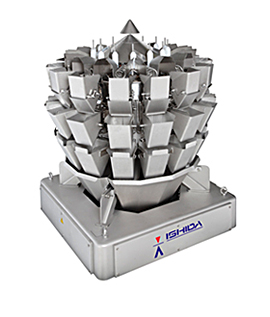
For more information about this article from Ishida Europe Ltd. click here.
Other articles from Ishida Europe Ltd..
Interesting Links:
List all your Scales and other Weighing Products (new and used) on our Marketplace !
Visit AutomationInside.com for Automation and Technology Related News!
Are you interested to include your Link here, visible on all WeighingReview.com articles and marketplace product pages? Contact us
List all your Scales and other Weighing Products (new and used) on our Marketplace !
Visit AutomationInside.com for Automation and Technology Related News!
Are you interested to include your Link here, visible on all WeighingReview.com articles and marketplace product pages? Contact us
© Ishida Europe Ltd. / International Weighing Review
Previous article
Demo Video showing D Series Scales Price Computing Scales from Detecto Scale
Next article
The Loma X-weigh system that simultaneously scans and weights
Popular News
Weighing Review Newsletter
Popular Tags
Login









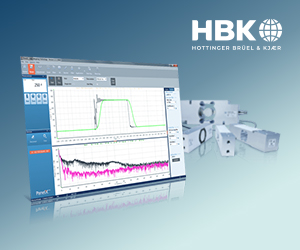

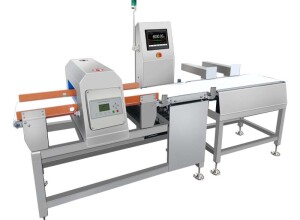

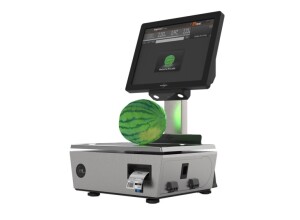



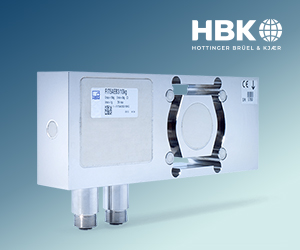



Interested? Submit your enquiry using the form below:
Only available for registered users. Sign In to your account or register here.